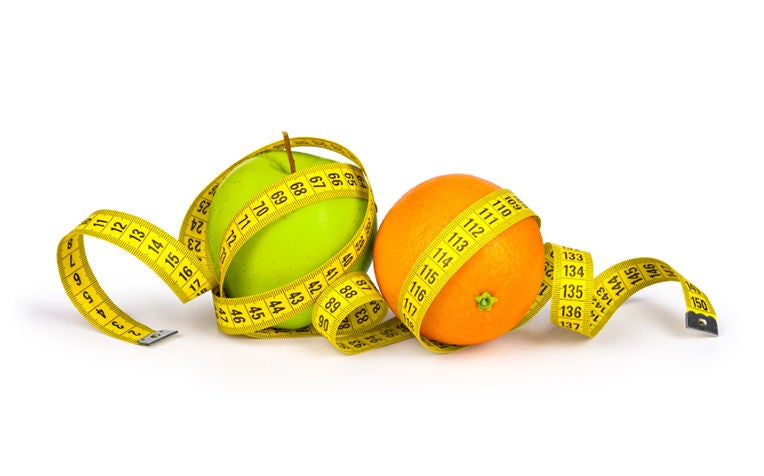HealthXchange will NEVER ask you to transfer money over a call. If in doubt, call the 24/7 ScamShield helpline at 1799, or visit the ScamShield website at www.scamshield.gov.sg.
How Body Shape Affects Your Health Risk

A well-balanced diet is crucial for a healthy body weight.
Determining your body shape type and health risks
Your body shape can provide you with insight into your health risks. To find out if you are apple- or pear-shaped, calculate your waist-to-hip ratio (WHR). This is done by dividing your waist measurement by your hip measurement.
Waist-to-hip ratio (WHR) = Waist measurement / Hip measurement
To determine your waist circumference, measure around the smallest part of your waist, or about one inch above your navel. For your hip circumference, measure the widest part of your hip. Divide the waist measure by the hip measure to get your waist-to-hip ratio (WHR).
Apple-shaped body – WHR above 0.8 for women, above 0.9 for men
If you have an “apple-shaped” body habitus, your waist size is larger than your hip size.
Health risk: Most of the fat in an apple-shaped person is distributed around the internal organs in the abdomen area. This can be associated with a greater risk of heart disease, diabetes and stroke.
Pear-shaped body – WHR below 0.8 for women, below 0.9 for men
If you are a pear type, your hip section is likely to be wider than your upper body, with most of the fat deposited around your thighs, hips and buttocks region.
Health risk: Having a pear body shape indicates a lower metabolic risk compared to an apple body shape.
Tips on how to influence your body shape type
Your body shape is determined by a number of factors. These include:
- Genes
- Diet
- Lifestyle
“Your diet, level of activity and the type of exercise you do, together with genetic traits can affect the fat deposition and distribution in your body,” shares Dr Tan Hong Chang, Senior Consultant from the Department of Endocrinology at Singapore General Hospital (SGH), a member of the SingHealth group.
Regardless of whether you have a “pear-” or “apple-” body shape, you should always:
Maintain a well-balanced diet that is appropriate to sustain a healthy body weight.
Cut back on saturated fats found in high-fat dairy and red meat, and hydrogenated oils found in processed foods. Instead, opt for a low-fat diet that includes low-fat dairy foods such as milk, yogurt and cottage cheese. This can help break down stubborn fat cells in your hips and thighs.
Do regular exercise of moderate intensity at least 20-30 minutes a day, at least five times per week.
Ref: S13
Check out other weight management articles:
What Causes Middle Age Weight Gain?
Unlock Your Body's Fat Burning Potential
Which Exercise Burns More Fat? Resistance Training or Aerobics?
10 Golden Rules for Safe, Effective Weight Loss
Contributed by
Related Articles
Conditions & Treatments
Public Events
Get the Health Buddy App
© 2025 SingHealth Group. All Rights Reserved.


















 Get it on Google Play
Get it on Google Play